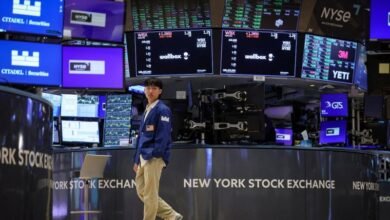Should Your 60/40 Portfolio Go Global?

After years of lagging behind US stocks, international equities are enjoying a long-overdue revival in 2025: The Morningstar Global Markets ex-US Index is up 25% for the year to date through Sept. 12 while US stocks, represented by the Morningstar US Market Index, are up about 13%. The rally in international stocks may leave 60/40 investors wondering what benefits a global 60/40 portfolio might provide versus a US-only one today. Jason Kephart, who’s a senior principal with Morningstar’s multi-asset ratings team, discusses the case for adding international stocks to a 60/40 portfolio.
Susan Dziubinski: What are some of the factors driving the performance of international stocks this year?
Jason Kephart: It’s hard to point to just one factor driving global markets, but a few dynamics have supported international stocks this year. A key driver has been the decline in the US dollar. The ICE USD Spot Index, which measures the dollar against a basket of currencies, has fallen about 10% through August. We also saw US markets face a sharp selloff earlier in the year amid uncertainty over tariffs. International stocks were less impacted, thanks in part to their lower starting valuations and strong corporate earnings.
Dziubinski: What impact is the rally in international stocks having on 60/40 portfolios that have some exposure to international stocks versus US-only 60/40 portfolios?
Kephart: As you might expect, more globally diversified 60/40 portfolios are winning for the first time in a long time. One easy way to gauge the performance of US-only versus globally diversified balanced funds is to use Vanguard Balanced Index VBINX and Vanguard LifeStrategy Moderate Growth VSMGX as proxies. The former is 100% US stocks and bonds and the latter has about 25% in non-US stocks and 10% in non-US bonds. Through Sept. 12, Balanced Index has gained 10.5% and its LifeStrategy sibling has gained 12.7%. This year could be the first time since 2017 that LifeStrategy has outperformed Balanced Index.
Dziubinski: Even when you take this year’s rally into account, international stocks have a long way to go before they catch up to the trailing returns of US stocks during the past decade. Given that, is there a tactical case to be made for a global 60/40 portfolio today rather than a US-only 60/40 investment?
Kephart: Tactical allocation is very hard to get right, and most professional portfolio managers we see attempt it don’t succeed. We wouldn’t recommend trying to time any shorter-term market moves, but if you’re a US-only 60/40 investor and you’re worried about FOMO from international stocks, adding some international stocks for the long haul could make sense.
Dziubinski: What about diversification, Jason? Do international stocks diversify the standard US 60/40 portfolio in a meaningful way? In other words, do they improve risk-adjusted results?
Kephart: Our colleagues Christine Benz and Amy Arnott looked at that in their most recent Diversification Landscape. From a pure diversification standpoint, international stocks have behaved more similarly to US stocks in recent years, if we’re just using correlations. But as we’ve seen this year and for a long stretch from 2000 to 2009, that doesn’t mean they can’t also add value by delivering higher returns. It is possible that geopolitical uncertainty could create more dispersion between US and non-US stocks going forward.
Dziubinski: Emerging-market stocks tend to have lower correlations with US stocks. Should a 60/40 investor consider adding emerging-market stocks into the mix in addition to developed-market non-US stocks? What are the pros and cons of doing so?
Kephart: Emerging markets make up about 10% of the global stock market, so they should be on investors’ radar when considering international investments.
Dziubinski: Let’s talk about 60/40 funds that diversify globally. What percentage of the portfolio, in general, do these global 60/40 funds dedicate to international versus US stocks?
Kephart: They tend to be benchmarked to a global stock market index, like the MSCI ACWI. In that index, US stocks make up about 65%. Within the stock sleeve of global 60/40 portfolios, that translates to about 20%. In general, I’d say we see between 15% to 25% for more actively managed global balanced funds.
Dziubinski: Do most engage in currency hedging?
Kephart: Not on the stock side, but we do tend to see currency hedging when it comes to international bonds. For bonds, the currency can drive a lot of volatility, so hedging those back to the US dollar helps them behave more like the boring bonds you want to use to protect against stock market swoons.
Dziubinski: Talk about a few of the global 60/40 funds that Morningstar thinks most highly of.
Kephart: One of our top picks is Vanguard LifeStrategy Moderate Growth, which we mentioned earlier. It carries a Silver Morningstar Medalist Rating, and, true to Vanguard’s style, it’s broadly diversified and low-cost. For investors seeking a more active approach, we also like BlackRock Global Allocation MALOX, T. Rowe Price Global Allocation TGAFX, and American Funds Global Balanced GFBLX. Each is managed by an experienced team with a disciplined process for selecting stocks and bonds and building well-diversified portfolios.
Dziubinski: What would you suggest for investors who may already own a 60/40 fund—can they just bolt-on an international fund? And if yes, in what proportion?
Kephart: You always need to be cautious with bolt-ons. If it’s a straightforward, market-cap-weighted ETF that tracks something like the MSCI EAFE or MSCI Emerging Markets index, that’s usually fine. But the more active the strategy, or the more active your overall portfolio, the more you need to be careful. In those cases, you risk layering in redundant exposures or overlapping styles that can actually reduce diversification rather than improve your portfolio.
Dziubinski: The media talks a lot about investments that investors should add to their 60/40 portfolios—things like cryptocurrencies and private market investments. Where do international stocks rank when it comes to things that can meaningfully add resilience to a 60/40 portfolio over time?
Kephart: International stocks may not be as hip as digital assets and private markets right now, but they are an important part of your investing toolkit. As we’ve seen this year, US stocks won’t always outperform, and having low-cost diversified exposure to companies outside the US can help smooth out those periods.
Credit: Source link





